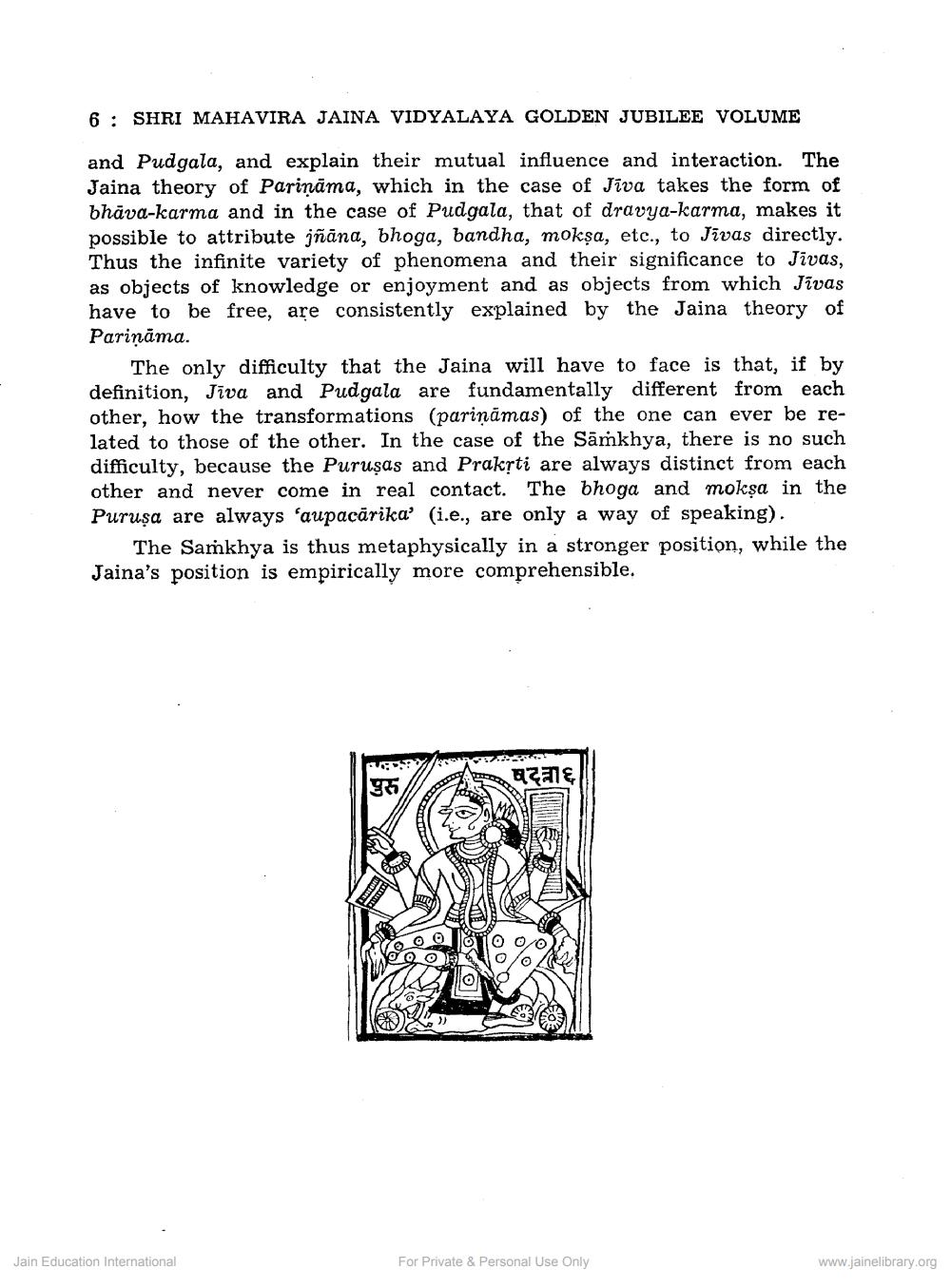Book Title: Comparative Study of Jaina and Samkhya Yoga Theories of Parinama Author(s): Indukala H Zaveri Publisher: Z_Mahavir_Jain_Vidyalay_Suvarna_Mahotsav_Granth_Part_1_012002.pdf and Mahavir_Jain_Vidyalay_Suvarna_ View full book textPage 6
________________ 6: SHRI MAHAVIRA JAINA VIDYALAYA GOLDEN JUBILEE VOLUME and Pudgala, and explain their mutual influence and interaction. The Jaina theory of Parinama, which in the case of Jiva takes the form of bhava-karma and in the case of Pudgala, that of dravya-karma, makes it possible to attribute jnana, bhoga, bandha, moksa, etc., to Jivas directly. Thus the infinite variety of phenomena and their significance to Jivas, as objects of knowledge or enjoyment and as objects from which Jivas have to be free, are consistently explained by the Jaina theory of Parinama. The only difficulty that the Jaina will have to face is that, if by definition, Jiva and Pudgala are fundamentally different from each other, how the transformations (parinamas) of the one can ever be related to those of the other. In the case of the Samkhya, there is no such difficulty, because the Purusas and Praksti are always distinct from each other and never come in real contact. The bhoga and moksa in the Purusa are always 'aupacarika' (i.e., are only a way of speaking). The Samkhya is thus metaphysically in a stronger position, while the Jaina's position is empirically more comprehensible. a uzale hu Oo ooo Jain Education International For Private & Personal Use Only www.jainelibrary.orgPage Navigation
1 ... 4 5 6
